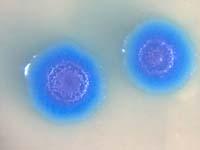Synthesis, first synthetic life

J. The Synthesis has been carried out in the laboratory of Craig Venter, so it is not surprising that with his presence such an echo occurs and attitudes are generated in favor and against, which in other occasions has generated a great debate.
For example, Venter created the private company Celera Genomics with the intention of decoding the human genome. In collaboration with the International Project of Human Genome, in 2003 it announced the fulfillment of the objective. Yes, everyone worked separately: in the international project many groups of researchers collaborated and their result was public, while Celera had commercial intentions and that was not the taste of everyone. In any case, it was also said that Celera's result was better than that of the other.
Syntia or Mycoplasma laboratorium
Currently J. He is president of the Craig Venter Institute. It has several projects, but on this occasion the project of synthetic bacteria has generated curiosity and debate. ETC, an organism that controls biotechnological developments, has called the bacterium Sintia, while Venter knows it as Mycoplasma laboratorium. However, it is the first life that does not exist in nature and that has been created in the laboratory.

Venter requested last year a patent on the minimal genome of a bacterium. In fact, the application includes the method of elaboration of the fully synthetic being and the minimum genome of it. The request does not mean that it has managed to do so, but it has been enough to generate an opposing position in some sectors of society. And it seems unacceptable to some to create life and less to patent. In addition, they believe it can be dangerous.
Synthetic organisms and genetically modified organisms are different. There are already many genetically modified organisms that are made from organisms present in nature, making some modifications in their genome, such as the inactivation of some gene or the introduction of a gene from another organism.
However, a synthetic organism is not a variant of another in nature, but a new organism. Venter announced in 2002 his intention to create artificial life and his researchers started working with the bacterium Mycoplasma genitalium. This bacterium lives in the genital tract and has the smallest known genome (482 genes). The researchers were removing the genes one by one to know the minimum genome that can contain an organism. Result: 318 genes.

From there, artificial life begins to emerge. The genes were introduced into a bacterium without a nucleus and placed in an area rich in nutrients. They have not yet said clearly whether they have managed to grow and reproduce, but have taken some steps and asked for patent. According to Venter, they will have the opportunity to give this basic organism the desired characteristics. With the incorporation of suitable genes, the bacteria could produce desired drugs or molecules.
The advantage for Venter is dangerous for ACT and many others. They believe they can be used to create harmful microorganisms and ask that this type of research be rigorously controlled and do not give patents. In any case J. They continue to work at the Craig Venter Institute and it is very possible that some results will soon emerge.
Published in Deia
Buletina
Bidali zure helbide elektronikoa eta jaso asteroko buletina zure sarrera-ontzian











